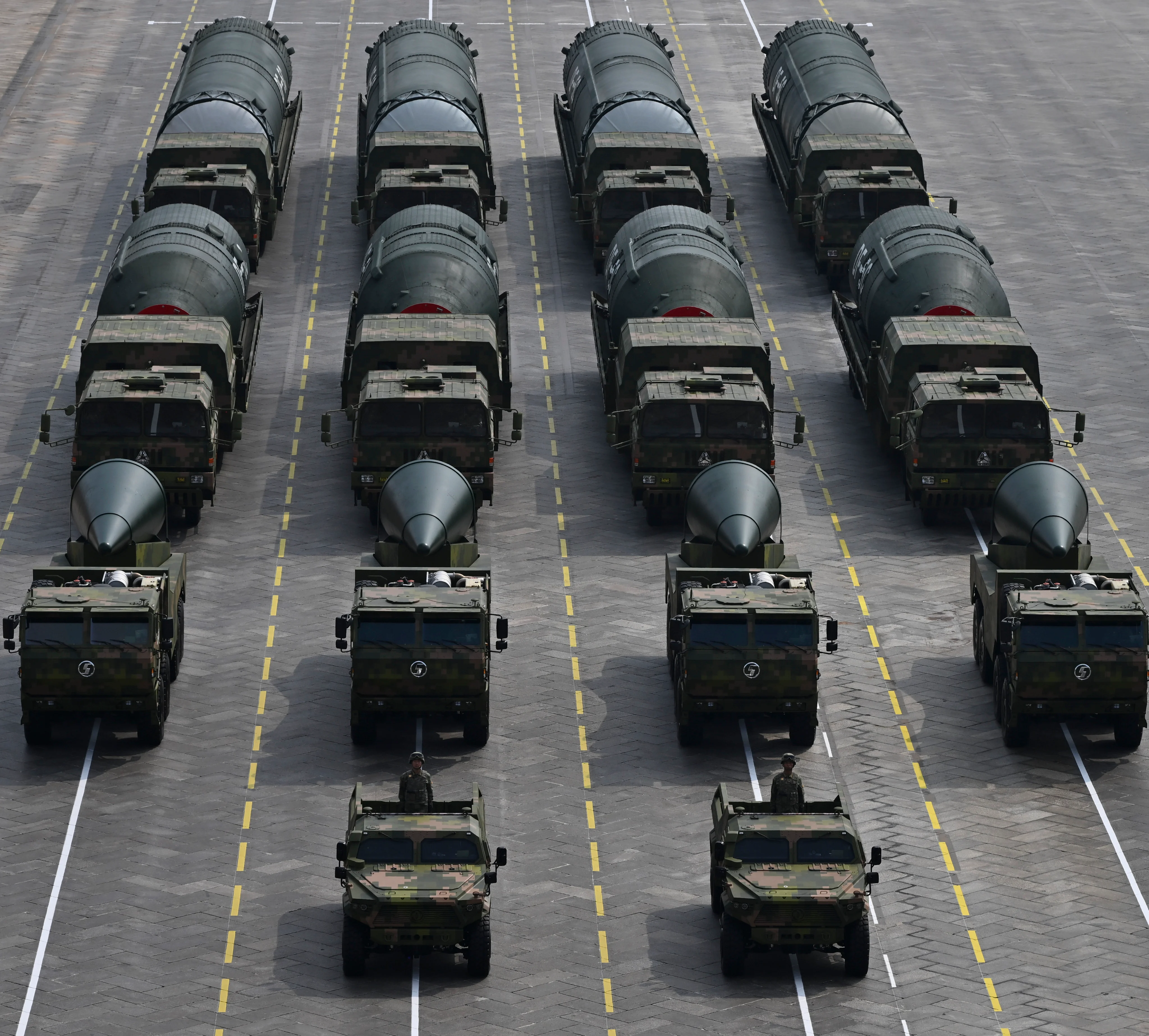Copyright scmp

China is expected to expand and modernise its nuclear arsenal to narrow the gap with the US and Russia following Beijing’s fresh pledge to strengthen its “strategic deterrence” to safeguard the global balance, according to analysts. The pledge was part of the proposed 15th five-year plan which was endorsed last week by the Communist Party’s Central Committee and will cover the years 2026-2030. Details of the proposal were released on Tuesday, including a pledge to “strengthen strategic deterrence capabilities, [and] safeguard global strategic balance and stability”. Strategic deterrence is generally understood to refer to nuclear forces, and the term has appeared in previous and current Chinese government documents. In his party congress report in 2022, Xi said China would “build a strong strategic deterrence system”. And in 2021, the 14th five-year plan proposal said the country would “build a high-level strategic deterrence capability”. However, this is the first time such a document has explicitly linked a nuclear build-up to maintaining a “global strategic balance and stability”. Analysts said this suggested that Beijing aimed to narrow the gap – but not necessarily seek parity – with the United States and Russia, which together hold roughly 90 per cent of the world’s nuclear weapons. Timothy Heath, a senior international defence researcher at the US-based Rand Corporation, said China aimed to maintain a “credible nuclear deterrence” but also to “reduce the risk of nuclear war” through nuclear non-proliferation. “China will very likely increase its nuclear arsenal to ensure it has a reliable second-strike capability. This could mean expanding the arsenal to about 1,000 warheads,” Heath said. “The US nuclear force is to deter enemies from attacking the US and its allies around the world. China only needs to deter attacks on itself. Thus, China will likely settle for a ‘balance’ of forces rather than parity. The goal is reliable second-strike capability, not equal numbers of warheads with the USA.” China has about 600 nuclear warheads, according to a June report by the Stockholm International Peace Research Institute (SIPRI), which also noted the country had added roughly 100 new warheads per year since 2023. SIPRI estimates the US has a total inventory of 5,177 warheads, of which 3,700 are in military stockpiles, while Russia has 5,459, of which 4,309 are in military stockpiles. The US Department of Defence has projected that China could reach around 1,000 warheads by 2030. Even if China reached a projected maximum of 1,500 warheads by 2035, SIPRI said, it would still represent only about one-third of the existing Russian and US stockpiles. Zhou Bo, a retired People’s Liberation Army senior colonel, said the pledge meant that China aimed to expand its nuclear arsenal to a level that would ensure “no country dares to contemplate a first nuclear strike” against it. “This indicates the direction has been set. Taking the US and Russia’s 1,550 deployed warheads under the New START Treaty as a reference point, an increase in China’s numbers would naturally strengthen the sense of strategic balance,” Zhou said. The New START pact, a nuclear arms reduction treaty signed by Washington and Moscow in 2010, limits each side to 1,550 deployed nuclear warheads and 800 deployed and non-deployed ballistic missile launchers and heavy bombers. Zhou also noted that the country’s goal to build up a credible nuclear retaliation ability did not change China’s long-standing no-first-use nuclear policy. Trump has repeatedly called on China to join the US and Russia in nuclear disarmament talks, an idea Beijing has rejected, citing the disparity in nuclear forces with the US. “The nuclear forces of China and the US are not at the same level at all,” the foreign ministry said in August. Most recently, Trump said last week that a deal on nuclear arms between him and Chinese President Xi Jinping was possible during their meeting in South Korea this week. He also noted that Russian President Vladimir Putin had raised the prospect of a bilateral de-escalation of nuclear weapons, and China could be added to that effort, Reuters reported on October 23. China has a range of nuclear-capable missiles, many of which were on show in Beijing in a military parade in September. Among them was the JL-1 long-range air-launched ballistic missile, which completes China’s nuclear triad. Other systems revealed included the JL-3 submarine-launched ballistic missile and the DF-61, DF-31BJ, and DF-5C intercontinental ballistic missiles, which are believed to be capable of reaching the continental US. Zhao Tong, senior fellow at the Carnegie Endowment for International Peace, said the new phrasing in the 15th five-year plan signalled Beijing’s interest in both the qualitative and quantitative growth of China’s nuclear forces. While it did not indicate how many more nuclear weapons China might seek, the phrasing could draw strong reactions from the US, he said. “The absence of clarity regarding the intended end point or military rationale for this build-up is likely to lead the United States and other countries to assume the worst and adopt comprehensive countermeasures,” Zhao added. Shi Yinhong, an international relations professor from Renmin University, said that closing the gap with the US and Russia would be a challenge, given China’s economic problems and how far it trailed. “Although China’s strategic capabilities have advanced rapidly, it still lags far behind the United States and Russia in both the quantity and quality of its nuclear forces,” Shi said. “With the country’s economy continuing to slow and facing increasing difficulties, truly achieving a global strategic balance in nuclear power – especially between China and the United States – remains a long and challenging task.”



